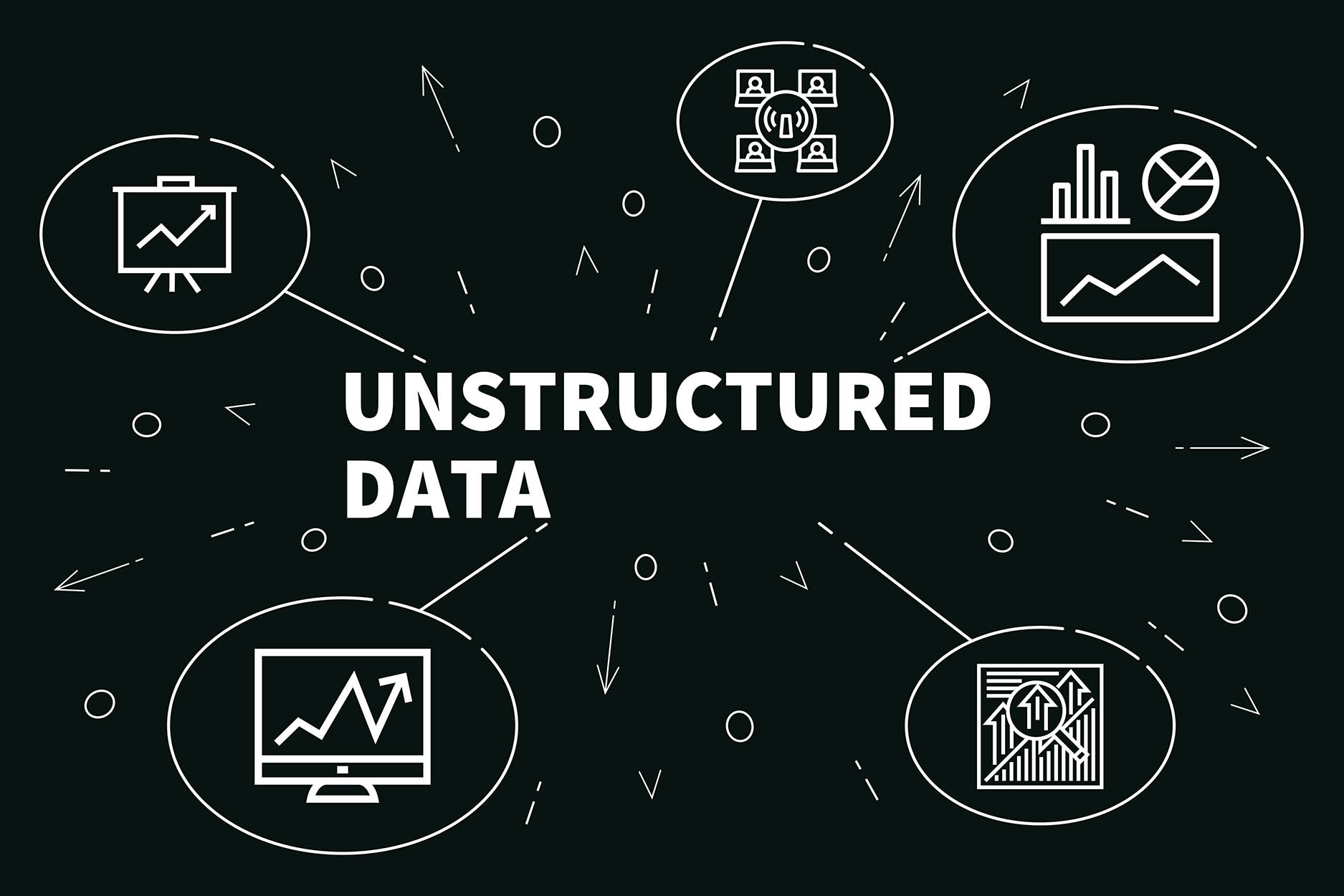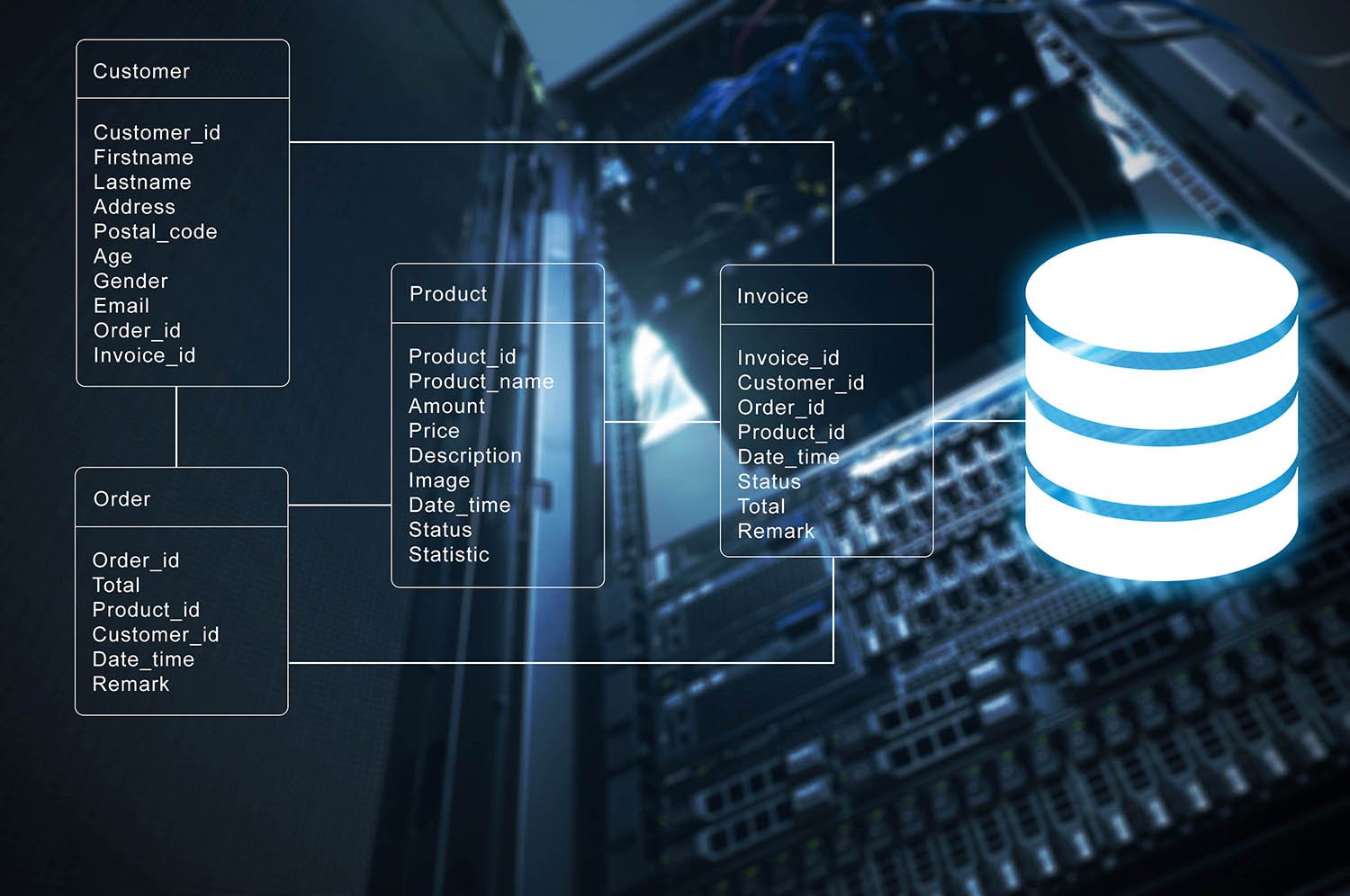A New Structure for Data Management
Types of Data Structures and IdeaFORGE
There are three major types of data, Structured Data, Semi-Structured Data, and Unstructured Data. IdeaFORGE® provides a solution to organize and manage these different data sets so that your organization can benefit from the digital transformation, business intelligence, business transformation and operational efficiency gained from effective management of data. One of IdeaFORGE’s many capabilities is the ability to provide an unparalleled unstructured data management (UDM) solution as-a-Service. In addition to Unstructured Data Management as a Service, IdeaFORGE® is the first technology that not only enables management of unstructured data, but also the creation and synthesis of new valuable data.

Unstructured Data
Unstructured Data is currently the biggest challenge facing Information Technology executives when dealing with data. Unstructured data is everywhere, and by definition, difficult to organize (structure). New Unstructured Data is being generated every second in hundreds of different formats across your organization. Some examples of Unstructured Data include written paragraphs of text, slide deck presentations like powerpoint decks, video content like marketing videos and webinars, photos and other images, technical briefs, manuals and documentation, website posts, RFPs, RFIs, other proposals and sales documents, and the list goes on and on. These many Unstructured Data Examples just scratch the surface of what would be required to structure the unstructured data. Giving Unstructured Data a structure (turning it into Structured Data) or some form of semi structured data is a huge challenge. Many organizations and businesses have been built to try and tackle this challenge, but they are not addressing the root cause of the problem.

Creating a Structure for Unstructured Data requires a rethinking of traditional ways of doing business, and upon completion of this business transformation and digital transformation process, an organization will emerge faster, more agile, with a better understanding of how they articulate critical business information, and achieve significant cost savings in creating and distributing content both through internal communications and external communications.
Semi-Structured Data
Semi-Structured Data is data that was once unstructured, but through a series of processes becomes Semi-Structured Data through the addition of metadata tags and other types of reference information. Semi-Structured Data is not the solution to dealing with the massive quantities of Unstructured Data that exist and are created every day. Semi-Structured Data is the band-aid on the 6 inch wound gushing revenue, wasted time, and poorly informed action.

An example of Semi-Structured Data would be a paragraph of text that has a number of keywords and other metadata that can fall into a relational database. A super simple example would be the sentences “I love data. My favorite type of data is structured data.” The keywords that may be identified to turn this unstructured data into semi-structured data could include: “data” , “structured data” , “love” , “favorite”. Then these keywords would be accessible through some kind of standard relational database and could be used for some simple structured data analysis.

The issue with focusing on converting unstructured data into semi structured data through keyword analysis and similar techniques is that aside from analysis of what content already exists, is there anything else that can be done with that information? Can your semi-structured data be leveraged in more ways that solve other business problems, or allow your teams to optimize their creation of new unstructured data because they can easily find and use what already exists? The answer was no, until now. This is where IdeaFORGE® comes into play.
IdeaFORGE® provides a whole new approach to handling unstructured data, that begins long before the unstructured data is created. IdeaFORGE’s methodology was designed to understand the motivations behind WHY unstructured data is created and why it is shared, and use that intelligence to more effectively give structure to unstructured data.
Structured Data
Structured Data was the gold standard for what all data aimed to be because it was uniform, easy to put into buckets, filter, sort, organize, and manage. Structured Data is a spreadsheet’s best friend. However as we have already explored, there is so much data that does not fall into the category of Structured Data, and this creates a problem. Structured Data is defined as data contained within a fixed field in a record or file. This definition for Structured Data is broad, but it basically means if data can be neatly cut up into pieces and each piece can be nicely organized and put into a designated place where it can be quickly found later, and also sorted, organized, filtered, or analyzed. Structured Data can include data like the “Name” , “Email” or “Phone Number” field on a contact form. Many Structured Data Management tools exist that allow easy organization of this type of content. One example of Structured Data management tools would be the Customer Relationship Manager (CRM). A CRM is designed to organize Structured Data by categories like account names, sales opportunities, and individual entity contact information. The challenge with CRMs and other types of Structured Data Management Tools is their method for structuring data starts to break down when the bounds of where one piece of structured data ends and another piece of Structured Data begins is harder to define.

What is Data Management?
Data Management is the process of organizing and making data useful. IdeaFORGE® has been designed to improve Master Data Management principels when dealing with data structures and unstructured data.

Data Science uses scientific methods, processes, algorithms and systems to extract knowledge and insights from data in various forms, both structured and unstructured. Vector Illustration concept
Unstructured Data Management
Data Structures are required for effective unstructured data management, however the type of data structures required for effective unstructured data management are different than the traditional approach found in all Content Management Systems (CMS) and Digital Asset Managers, as they all take the Semi-structured data band aid approach. Instead of using a process where Data Migration and Data Ingesting occurs in bulk at the document level, and that data is then analyzed and tagged within an Unstructured Database using a metadata management tagging system and framework, let us explore a different, more effective approach.

First, Unstructured Data identification must occur to allow Data Aggregation from all major data sources. The organization must use business transformation and digital transformation initiatives to rethink the creation of future unstructured data. Once Unstructured Data identification data aggregation occurs, unstructured data organization, and categorization can begin.

The process for Unstructured Data organization requires Unstructured Data to be segmented into different media types and formats. Different media formats and types have intrinsic properties that make a video have a different set of values and motivations that a text statement. Failure to organize and consider differences between media formats is one point of failure that causes content management systems and digital asset managers to fail.
After all Unstructured Data media formats are organized they can start to be categorized. IdeaFORGE® has been designed to organize different types of information into major categories just like an encyclopedia. Your organization’s content encyclopedia will allow for all unstructured data to be better organized and easily accessible by all authorized parties.
Upon completion of the Unstructured Data categorization process, your team should be left with a hierarchy or taxonomy of Unstructured Data by communication topic and objectives. An example of this would be placing all of the Unstructured Data about a specific product into a single location, this could include marketing information about the product, sales proposal information about the product, subject matter expert knowledge about the product, and design and engineering documents required to build the product.
Now that your Unstructured Data categorization has been completed the true power of IdeaFORGE® can be leveraged to allow your Unstructured Data to be fragmented into IdeaBlock modular components that break down content at the Idea Level®. Each media format will handle the fragmentation of IdeaBlocks slightly differently, this is why we segmented the content in an earlier step. Idea level Fragmentation of existing Unstructured Data can be a challenge but the IdeaFORGE® has a number of effective tools, technologies, and education materials to make this process easy.

Upon completion of the fragmentation of Unstructured Data, you should be left with a vast index of IdeaBlocks organized by topic and category. When that content is loaded into IdeaFORGE® you can begin to leverage, analyze and use the content in a variety of ways. Your Unstructured Data is now organized into IdeaBlocks and more versatile than ever before.
IdeaFORGE’s Solution for Unstructured Data Use Cases
Because IdeaFORGE’s process for turning Unstructured Data into a new type of Structured Data is so efficient, it is much easier to organize all of your organization’s information and communication requirements in a new way.
Effective Data Management matters for a variety of reasons but the most critical reasons that IdeaFORGE® delivers on surround how your employees access, share, and create knowledge within your organization and communicate that knowledge externally. Today in most organizations knowledge is highly siloed and it is very hard to know who knows what, and then initiating an effective knowledge transfer. The result in this inefficiency is excessive amounts of redundant work and wasted time. IdeaFORGE® provides a technology solution that can assist in the business transformation and digital transformation required to substantially eliminate all of these inefficiencies.
For a Chief Digital Officer (CDO) or Chief Data Officers assigned to develop solutions to these problems, IdeaFORGE’s software technology combined with the Idea Level® Data Management methodology can be an effective solution to the hardest part of the challenge which has limited digital transformation in the past, how to deal with unstructured data and make knowledge management more effective.

While IdeaFORGE® plays a huge role in Data Transformation and rethinking how we handle data, it is much more than just an Unstructured Data Manager. IdeaFORGE® is, at its core, the ultimate Storybuilding platform and an agent for massive digital transformation. The technology allows for a single source of data truth that combines the benefits of Master Data Management software (MDM) with strategic communications.
There is no reason to collect data if you are not going to use it, and through IdeaFORGE® all of the valuable data and content that your organization has collected and created comes full circle through Storybuilding.
IdeaFORGE® Storybuilding allows you to mix and match your IdeaBlock modular components to build a near infinite number of stories, in any media format, for your audiences. The technology allows for true data drive marketing at scale, because each modular component IdeaBlock has built in data analytics and data processing to understand exactly which blocks are performing best. This business intelligence knowledge can inform decision making for how a product is positioned or how a value proposition is explained. This level of detail and flexibility will change the marketing personalization game forever.

Personalization through Database Marketing has been around for years, and in its most common form is a simple template email that is connected to a marketing automation software where the name is dynamically replaced as the email is sent to each individual. Combining Data and Personalization through IdeaFORGE® will transform the old way of database marketing into a solution that can truly enable personalized stories delivered as one to one marketing at scale. This type of advance in communication and marketing would not be possible without the IdeaFORGE® Idea Level® data management methodology.
Diving deeper into the internal knowledge sharing applications of content within IdeaFORGE, it is critical to organize content though a thoughtful data taxonomy. IdeaFORGE® makes it easy to apply a taxonomy to content and unstructured data and organize and display that content in a way that it is easy for employees to access and use in their daily work.

